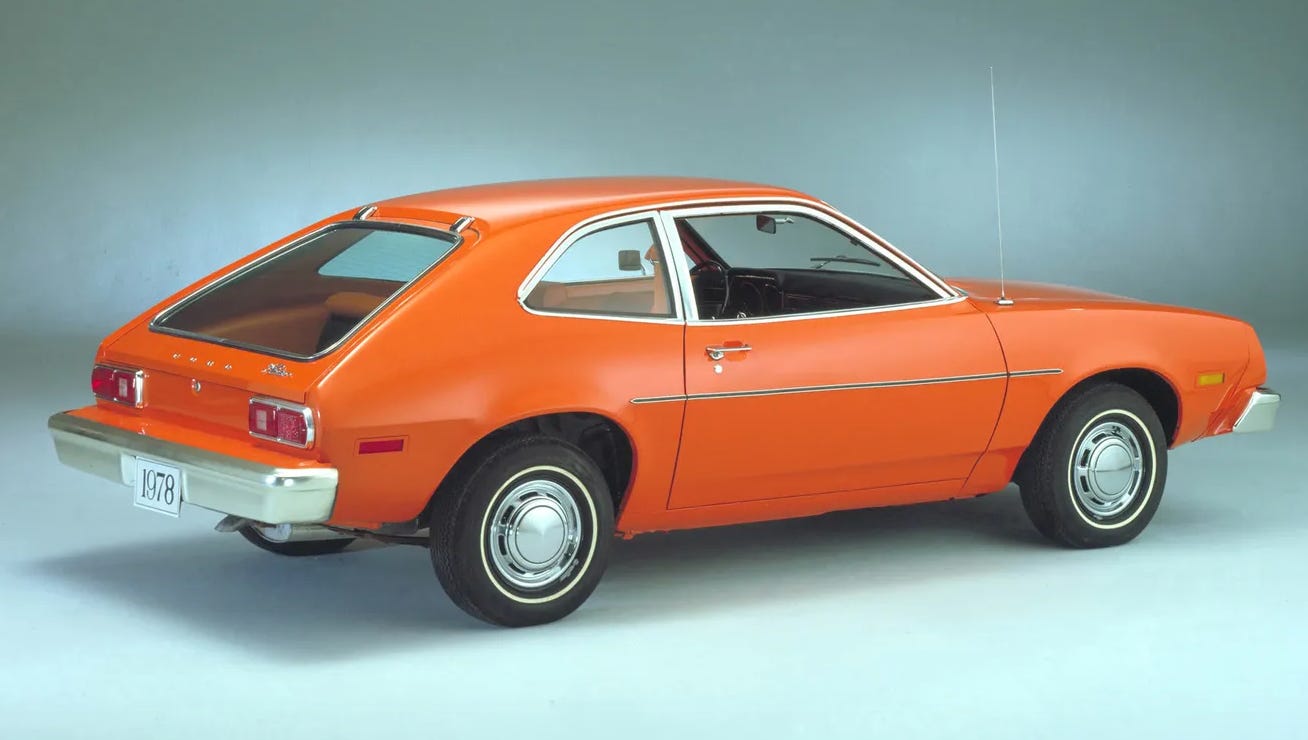The Importance of an Independent Product Organization
And How to Avoid Becoming a Feature Factory
In the early 1970s, Ford was facing major competition from Japanese automakers and Volkswagen, especially for subcompact cars. At its senior levels, Ford debated whether it even wanted to compete in the subcompact car market since it was successful with larger cars. But ultimately, Lee Iacocca won the debate, and Ford introduced a new line of subcompact cars known as Pintos.
Iacocca became president of Ford and had two goals with the Pinto: get it out fast and make it inexpensive. He ordered his VP of Engineering to “oversee what was probably the shortest production planning period in modern automotive history.”
“Lee’s car,” as the Pinto became known, went into production in almost half the time of a normal vehicle. That meant that tooling for the new Pinto began before all the engineering and quality assurance was complete. So when they discovered the Pinto had a serious flaw with the gas tank that could cause the car to catch fire, it was too late to make changes without delay or added cost. As an article from Mother Jones states:
When it was discovered the gas tank was unsafe, did anyone go to Iacocca and tell him? “Hell no,” replied an engineer who worked on the Pinto, a high company official for many years, who, unlike several others at Ford, maintains a necessarily clandestine concern for safety. “That person would have been fired. Safety wasn’t a popular subject around Ford in those days. With Lee it was taboo. Whenever a problem was raised that meant a delay on the Pinto, Lee would chomp on his cigar, look out the window and say ‘Read the product objectives and get back to work.’”
So Ford moved forward with the Pinto and hit Iacocca’s goals according to Motortrend: When the 1971 Pinto made its debut, it weighed 1,949 pounds with a base price of $1,919.
Unfortunately, the fatal flaw was never addressed. Ford, despite knowing about it and having a relatively inexpensive fix for it (between $5 and $11), made its infamous decision that it would be more cost effective to deal with the burn victims and deaths than to fix the problem across millions of cars. While the official count was 27 deaths in the 1970s, other estimates put the number between 500 and 900.
While there are many lessons to draw from the Ford Pinto, I want to focus on the incentives when the wrong person is in charge. With the Pinto, Lee Iaccoca was a salesperson. His primary goal was to sell vehicles, especially the Pinto. And since he was in charge, it was difficult for anyone to raise concerns about the engineering or product Ford was creating. The only things that mattered were the timeline and the cost. And many people paid for that.
The Importance of Incentives
Leadership plays a significant role in any company—shaping the culture, driving the strategy, and creating incentives. Unfortunately, when you have a poor leader, whether a CEO or head of a department, it creates problems for the entire organization.
Keep reading with a 7-day free trial
Subscribe to Prodity: Product Thinking to keep reading this post and get 7 days of free access to the full post archives.



